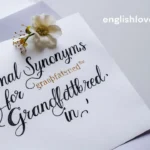Understanding when to use a comma before an ampersand (&) is essential for clear and correct writing. The ampersand is a logogram representing the word “and,” but its usage comes with specific rules, especially regarding punctuation.
This guide will walk you through when to use a comma before an ampersand, complete with examples for clarity.
When to Use a Comma Before an Ampersand
Rule 1: In Lists
When you’re listing items or names in a series, you might wonder if a comma is needed before the “&” symbol. The answer depends on the style guide you are following.
Correct Examples (Oxford/Serial Comma):
- “We need bread, milk, & eggs.”
- “The party was attended by Jane, John, & Alex.”
Incorrect Examples (Oxford/Serial Comma):
- “We need bread, milk & eggs.”
- “The party was attended by Jane, John & Alex.”
Note: In APA style, the Oxford comma is recommended, so a comma before “&” in a list of three or more items is correct. However, not all style guides require this, so it may vary.
Rule 2: In Business Names
Business names often use ampersands, and whether or not to use a comma before the “&” depends on the official registration of the company name.
Correct Examples:
- “Johnson & Johnson” (No comma, as per the official name)
- “Barnes & Noble” (No comma, as per the official name)
Incorrect Examples:
- “Johnson, & Johnson”
- “Barnes, & Noble”
Rule 3: Connecting Independent Clauses
When using an ampersand to connect independent clauses, which is less common and generally informal, the rules for commas still apply as if you were using the word “and.”
Correct Examples:
- “She would write the report, & he would present it.”
- “They could go to Italy, & they could visit France.”
Incorrect Examples:
- “She would write the report & he would present it.”
- “They could go to Italy & they could visit France.”
Rule 4: Beginning Sentences
It’s rare and generally not recommended to start a sentence with an ampersand. However, in creative or branding contexts where this might occur, a comma is not used after the “&.”
Correct Examples:
- “&Co is a leading firm in innovative solutions.”
- “&Beyond caters to luxury travel experiences.”
Incorrect Examples:
- “&, Co is a leading firm in innovative solutions.”
- “&, Beyond caters to luxury travel experiences.”
Rule 5: Indicating Degree or Manner
Using “&” to indicate a degree or manner is unconventional in formal writing. Therefore, specific rules about commas in such contexts are less relevant.
Rule 6: Before an Adjective or Adverb
When “&” is used in creative titles or names involving adjectives or adverbs, no comma is necessary.
Correct Examples:
- “Quick & Dirty Tips”
- “Fast & Furious”
Incorrect Examples:
- “Quick, & Dirty Tips”
- “Fast, & Furious”
Rule 7: In the Middle of Sentences
When “&” appears in the middle of sentences as part of a compound subject or object, no comma is needed unless it’s part of a list that follows the Oxford comma rule.
Correct Examples:
- “Peanut butter & jelly is my favorite.”
- “My duties included scheduling & inventory management.”
Incorrect Examples:
- “Peanut butter, & jelly is my favorite.”
- “My duties included scheduling, & inventory management.”
Rule 8: After a Dependent Clause
If “&” follows a dependent clause in a sentence, the usage of a comma before “&” would be unusual and typically incorrect.
Correct Examples:
- “After the meeting, we will have lunch & discuss the project further.”
- “Once you complete the form, please submit it to HR & await feedback.”
Incorrect Examples:
- “After the meeting, we will have lunch, & discuss the project further.”
- “Once you complete the form, please submit it to HR, & await feedback.”
Rule 9: Using “&” in a Compound Sentence
In compound sentences, “&” can replace “and” without adding a comma, unless it’s part of a list that requires an Oxford comma.
Correct Examples:
- “She bought a new car & he bought a motorcycle.”
- “We need to hire a new designer & a developer.”
Incorrect Examples:
- “She bought a new car, & he bought a motorcycle.”
- “We need to hire a new designer, & a developer.”
Read More: Is There a Comma Before and After “Namely”?
Rule 10: “&” and Lists Within Sentences
When “&” is used within lists that are part of a larger sentence, follow the specific list punctuation rules, considering the use of the Oxford comma where appropriate.
Correct Examples:
- “For the project, we need pens, paper, & notebooks.”
- “The new policies affect employees, management, & stakeholders.”
Incorrect Examples:
- “For the project, we need pens, paper & notebooks.”
- “The new policies affect employees, management & stakeholders.”
Understanding when and how to use a comma before an ampersand can enhance the clarity and professionalism of your writing. While the “&” symbol can be a stylistic choice in certain contexts, adhering to these rules ensures your writing remains consistent and correct.

Nicholas Clark is currently an English instructor at a university. She has experience in teaching and assessing English tests including TOEFL, IELTS, BULATS, FCE, CAE, and PTEG. With over a decade of teaching expertise, Nicholas Clark utilizes his knowledge to develop English lessons for her audience on English Overview.









